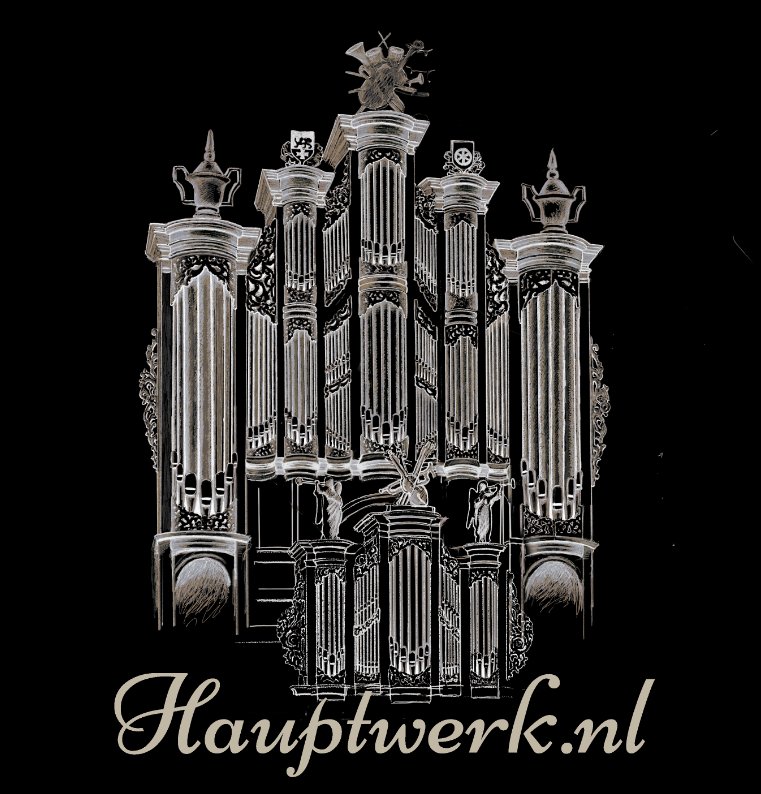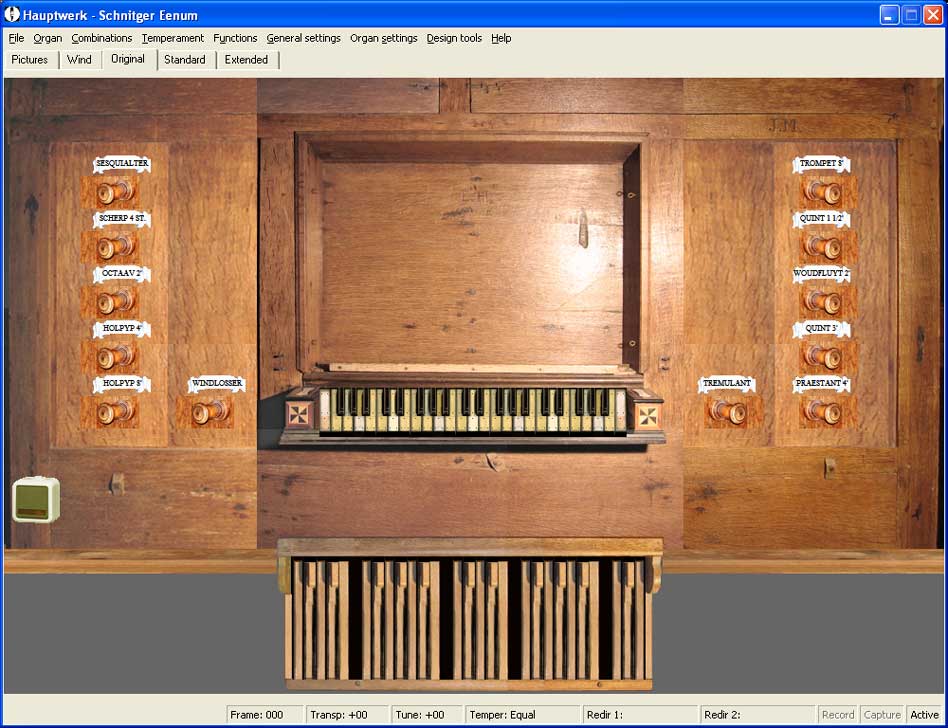
Virtual console Hauptwerk version 2 original
|
Here you see a representation of the original console from the organ of Eenum.
The original organ has a so called short-octave. This so-called "short octave" is actually a "long octave".
Earlier keyboards went down to F (with the keys F-G-A-B-H) (German key names). When organists wanted lower keys,
the makers added them (C-D-E) in a very efficient manner. We now call this "short octave" but there are no keys that were left out;
there were keys that were added. Later, of course, *more* keys were added (F sharp, G sharp,), etc.
On the original Eenum organ,
Key E plays C,
Key F plays F,
Key F sharp plays D
Key G plays G,
Key G sharp plays E.
The rest is normal.
The pedal board was added in later times and has not a short octave. It is connected to the manual in a strange way because there are no pipes for the lower C sharp, D sharp, F sharp and G sharp. They are connected one octave up.
To use the original manual you have to connect in HW2 by selecting Organ Settings/Connect Keyboard MIDI inputs to Organ Keyboards
MAN ORG with one of your manuals.
To use the original pedal you have to connect in HW2 by selecting Organ Settings/Connect Keyboard MIDI inputs to Organ Keyboards
PEDAL ORG with your pedal board.
|
This is a normal version of the Schnitger organ of Eenum.
The pedal board is permanently coupled to the manual by means of a pull-down pedal.
To use the standard manual you have to connect in HW2 by selecting Organ Settings/Connect Keyboard MIDI inputs to Organ Keyboards
MAN STD with one of your manuals.
To use this standard pedal you have to connect in HW2 by selecting Organ Settings/Connect Keyboard MIDI inputs to Organ Keyboards
PEDAL STD with your pedal board.
|
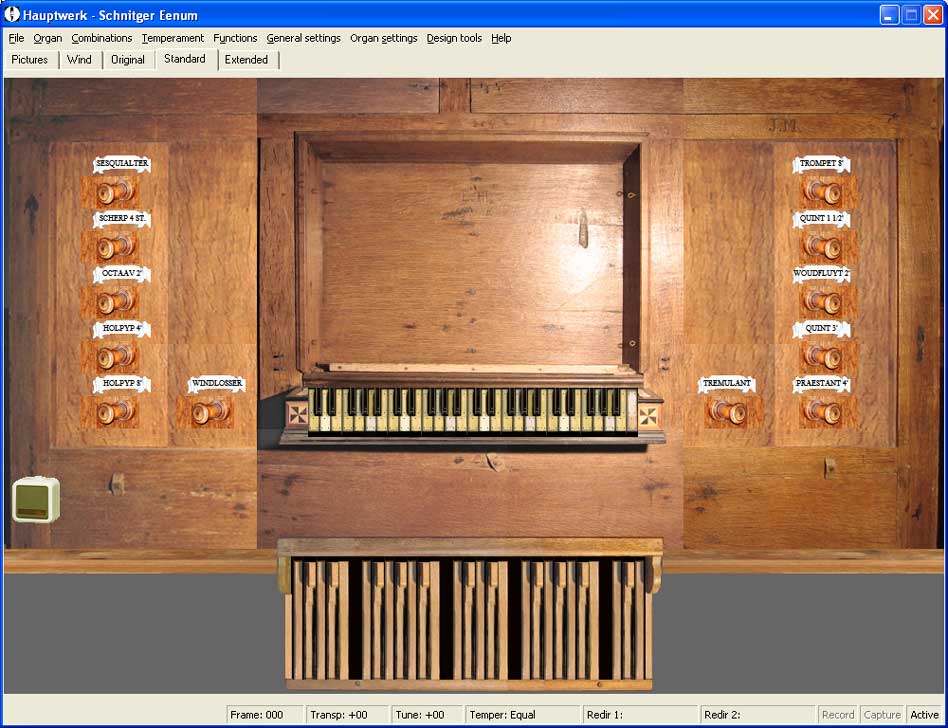
Virtual console Hauptwerk version 2 normal
|

Virtual console Hauptwerk version 2 extended
|
Here is the extended version with all 10 stops independently available on both manuals.
To play these standard manuals you have to connect in HW2 by selecting Organ Settings/Connect Keyboard MIDI inputs to Organ Keyboards
MAN1 EXT with your first manual and MAN2 EXT with your second.
To use 30 keys pedals you have to connect in HW2 by selecting Organ Settings/Connect Keyboard MIDI inputs to Organ Keyboards
PEDAL EXT with your pedal board.
|
You see 12 gray buttons for the 10 stops, the tremulant and the key-noise (Traktuur). In Hauptwerk 1 they do not light up if enabled. I think it is a bug in HW1. In myOrgan they do.
The reason for using these buttons is to create the unusual connections of the pedal board and it looks more like the original console.
The original organ has a so called short-octave. In the usual temperaments of that century you could not play the lower notes like C sharp, D sharp, F sharp and G sharp so Schnitger (and others)
omits the pipes for these notes. The following list of the lowest octave explains it.
Key E plays C,
Key F plays F,
Key F sharp plays D
Key G plays G,
Key G sharp plays E.
The rest is normal.
The pedal board was added in later times and and does not have a short octave. It is connected to the manual in a strange way because there are no
pipes for the lower C sharp, D sharp, F sharp and G sharp. They are connected one octave up.
|
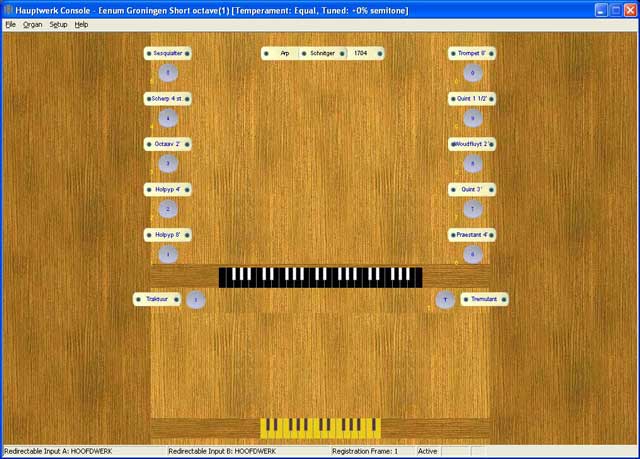
Virtual console Hauptwerk version 1 short-octave type 1
|
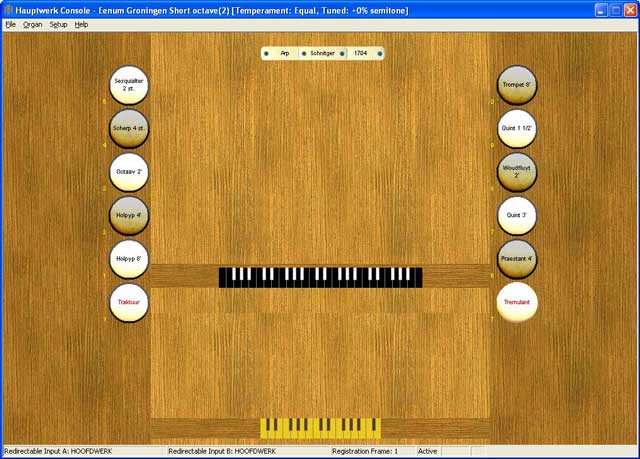
Virtual console Hauptwerk version 1 short-octave type 2
|
This is the normal Hauptwerk 1 look.
Here is the unusual connection of the pedalboard done in another manner with 2 draw knobs in the same position, one for the manual and one for the pedals.
The effect is the same as above.
|
The missing 4 samples per stop are created by retuning their lower neighbours one semitone up.
The pull-down pedal is coupled as usual.
|
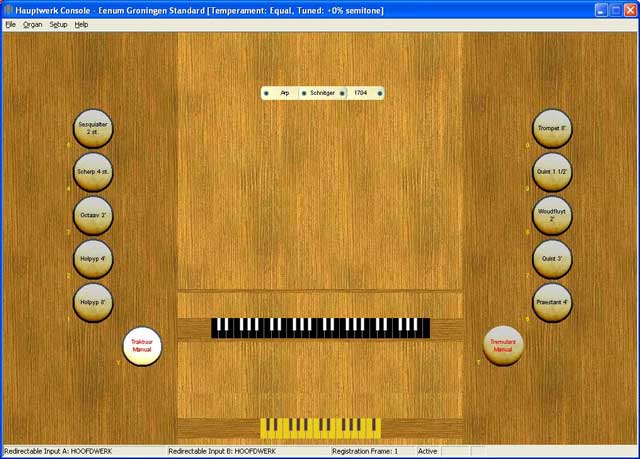
Virtual console Hauptwerk version 1 normal
|
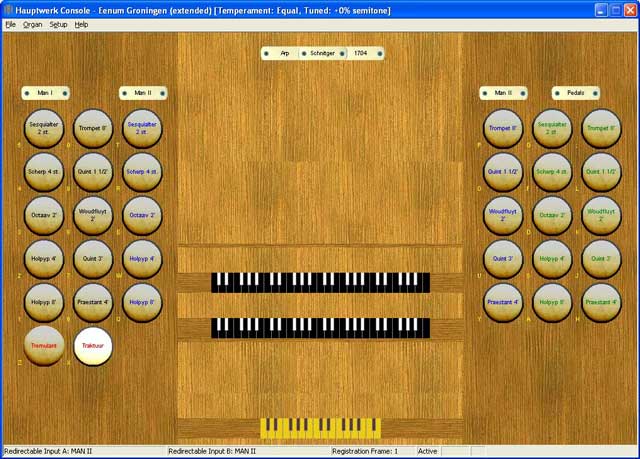
Virtual console Hauptwerk version 1 extended
|
Perhaps the purists under us do not like it but the extended version has 2 manuals and pedal with the 10 stops independently available.
This enables you to play more more complicated works.
|
|
This Hauptwerk 1 version of the Schnitger organ has two normal manuals and an independent pedal.
With this version you can use the tremulant on manual 2 without affecting manual 1 or the pedal.
This doubles the memory used. Refer to the table memoryconsumption for information about the memory requirements for all versions.
|
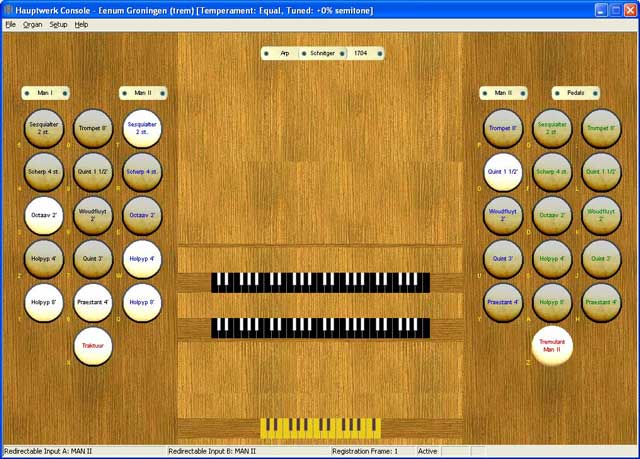
Virtual console Hauptwerk version 1
tremulant only on man 2
|
